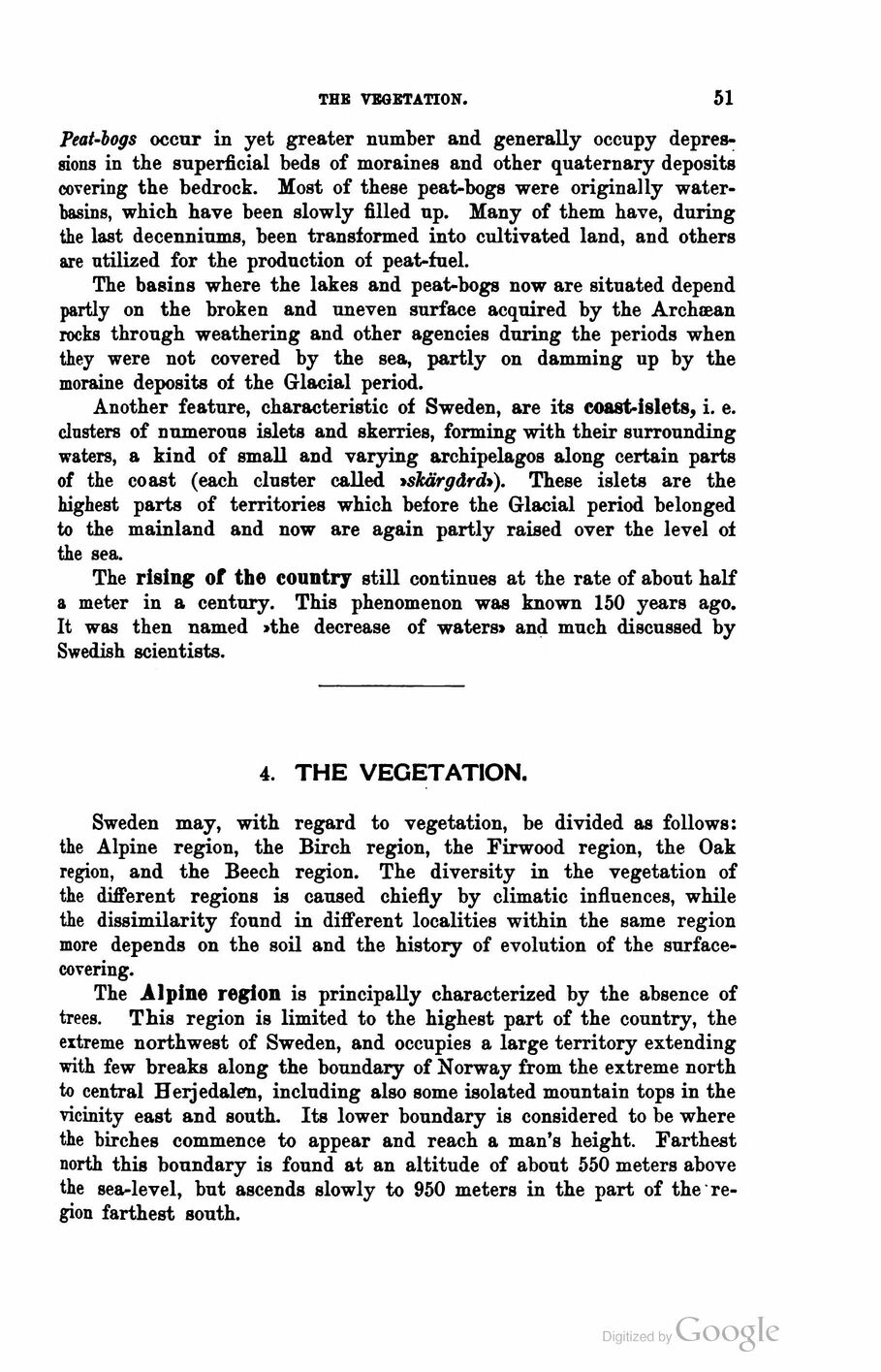
Full resolution (JPEG) - On this page / på denna sida - First part - I. Physical Geography - 3. Geology. By E. Erdmann, Ph. D., State geologist, Stockholm - 4. Vegetation. By Lector A. Nilsson, Ph. D., Institute of Forestry, Stockholm

<< prev. page << föreg. sida << >> nästa sida >> next page >>
Below is the raw OCR text
from the above scanned image.
Do you see an error? Proofread the page now!
Här nedan syns maskintolkade texten från faksimilbilden ovan.
Ser du något fel? Korrekturläs sidan nu!
This page has never been proofread. / Denna sida har aldrig korrekturlästs.
THE VEGETATION.
51
Peat-bogs occur in yet greater number and generally occupy
depressions in the superficial beds of moraines and other quaternary deposits
covering the bedrock. Most of these peat-bogs were originally
water-basins, which have been slowly filled up. Many of them have, during
the last decenniums, been transformed into cultivated land, and others
are utilized for the production of peat-fuel.
The basins where the lakes and peat-bogs now are situated depend
partly on the broken and uneven surface acquired by the Archæan
rocks through weathering and other agencies during the periods when
they were not covered by the sea, partly on damming up by the
moraine deposits of the Glacial period.
Another feature, characteristic of Sweden, are its coast-islets, i. e.
clusters of numerous islets and skerries, forming with their surrounding
waters, a kind of small and varying archipelagos along certain parts
of the coast (each cluster called ishärgårdt). These islets are the
highest parts of territories which before the Glacial period belonged
to the mainland and now are again partly raised over the level of
the sea.
The rising of the country still continues at the rate of about half
a meter in a century. This phenomenon was known 150 years ago.
It was then named »the decrease of waters» and much discussed by
Swedish scientists.
4. THE VEGETATION.
Sweden may, with regard to vegetation, be divided as follows:
the Alpine region, the Birch region, the Firwood region, the Oak
region, and the Beech region. The diversity in the vegetation of
the different regions is caused chiefly by climatic influences, while
the dissimilarity found in different localities within the same region
more depends on the soil and the history of evolution of the
surface-covering.
The Alpine region is principally characterized by the absence of
trees. This region is limited to the highest part of the country, the
extreme northwest of Sweden, and occupies a large territory extending
with few breaks along the boundary of Norway from the extreme north
to central Herjedalen, including also some isolated mountain tops in the
vicinity east and south. Its lower boundary is considered to be where
the birches commence to appear and reach a man’s height. Farthest
north this boundary is found at an altitude of about 550 meters above
the sea-level, but ascends slowly to 950 meters in the part of the
region farthest south.
<< prev. page << föreg. sida << >> nästa sida >> next page >>